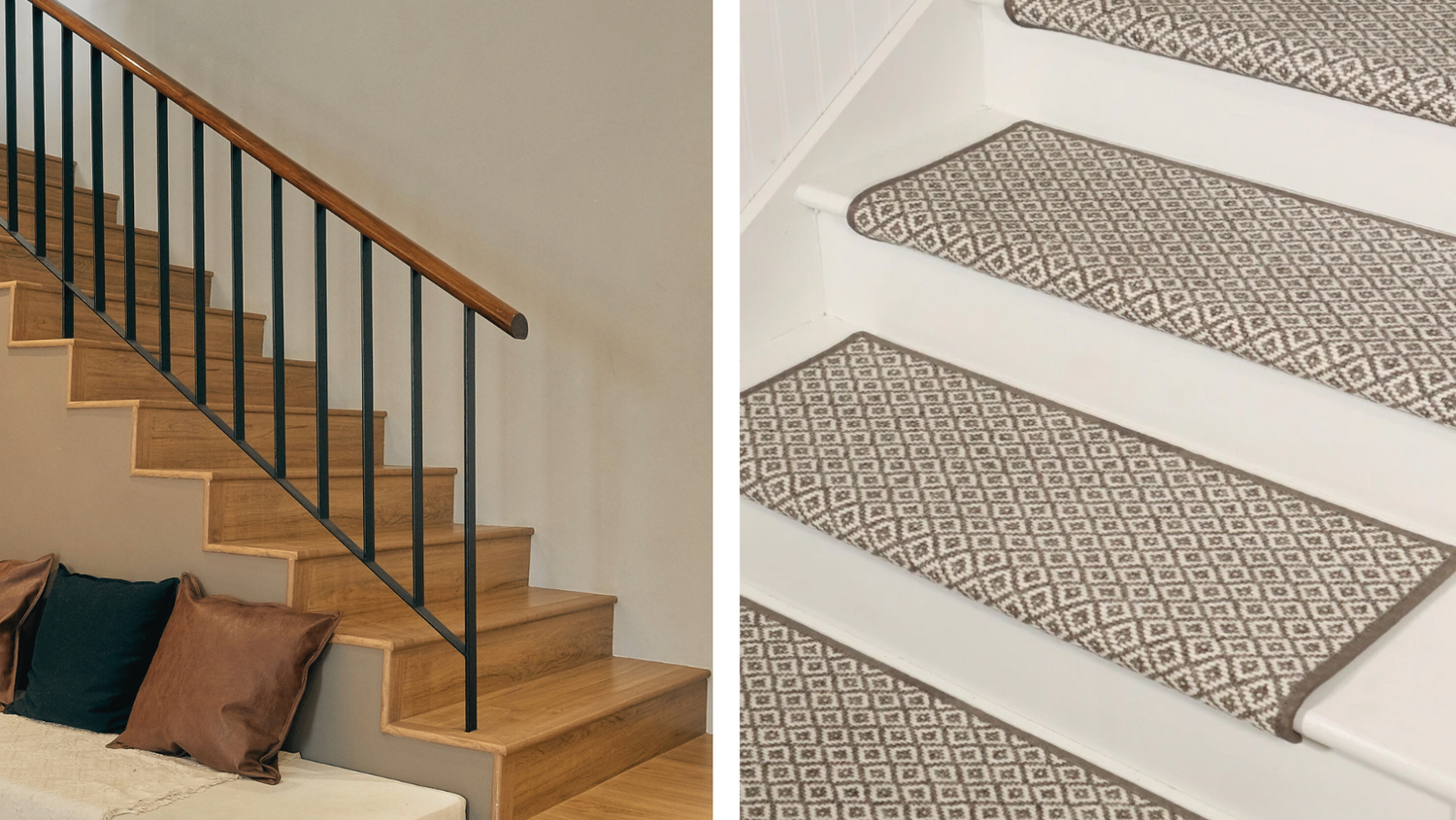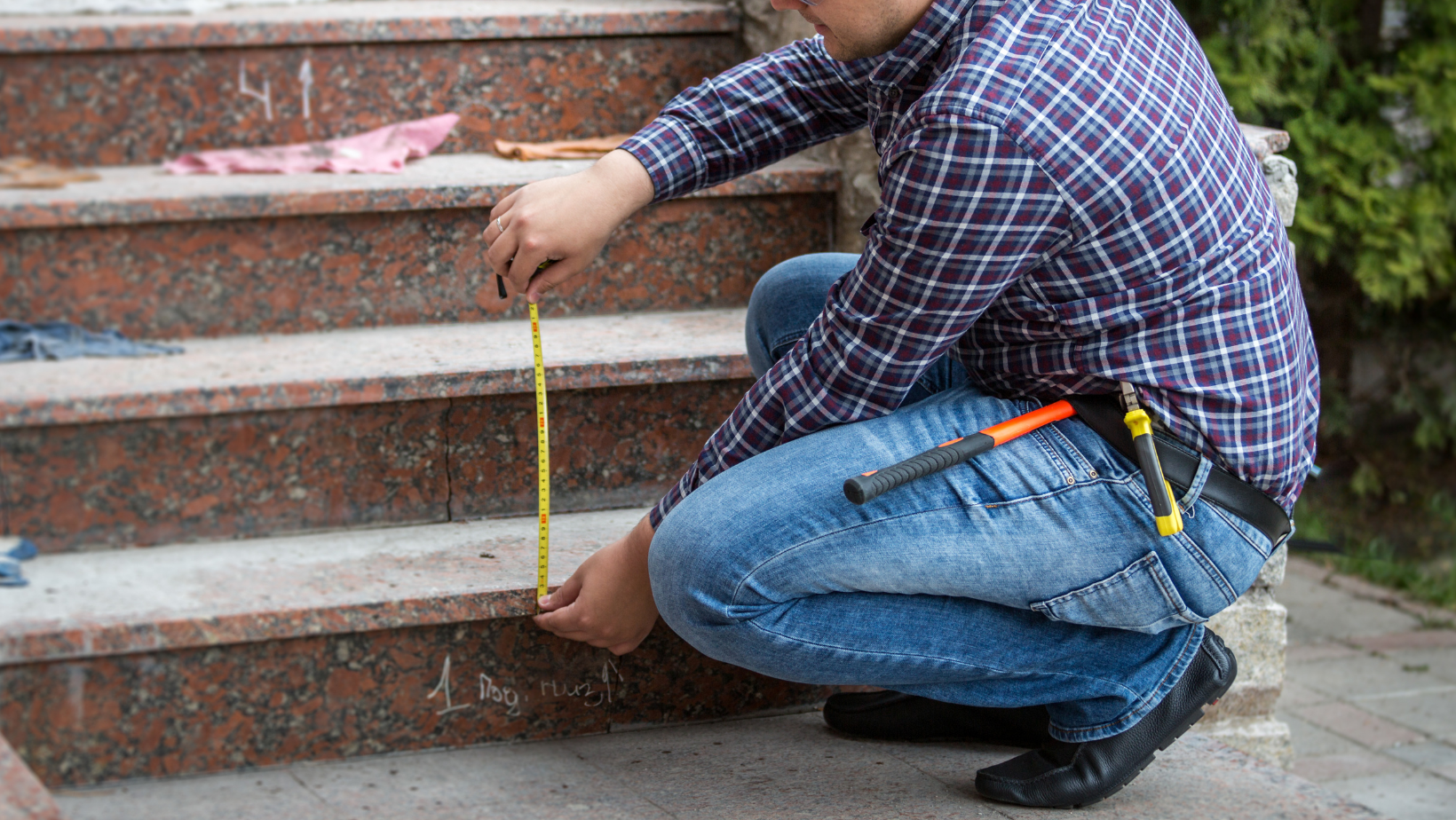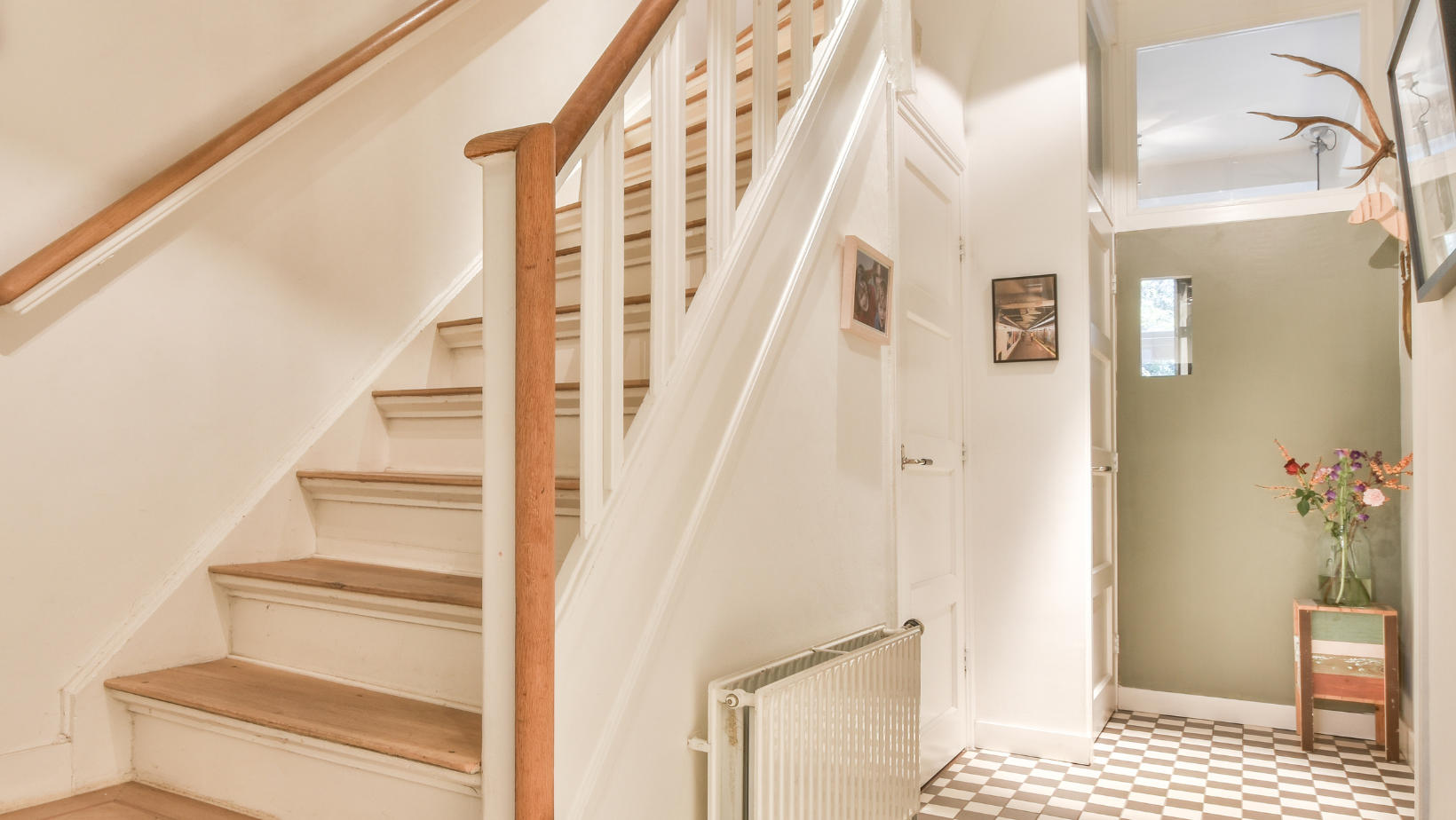Slippery stairs and loose coverings can lead to dangerous falls—especially for kids and pets.
To prevent this, the best method for how to secure stair treads is by cleaning the surface, applying the proper adhesive or tape, and pressing the tread firmly into place.
This guide breaks down the steps for securing wood, vinyl, rubber, and carpet stair treads so you can do it right the first time.
You'll also learn how to avoid common mistakes, choose the right materials for your space, and keep your installation looking clean and professional.
Whether you’re upgrading a single step or a full staircase, we’ll help you get the job done safely and beautifully.
Read on to take the guesswork out of securing stair treads and protect every step in your home.
Why This Project Is Worth Doing
Loose stair treads don’t just look bad—they’re a real hazard.
Maybe your dog has taken a tumble.
Maybe your toddler’s running barefoot.
Or maybe your stairs just feel unfinished.
That’s why knowing how to secure stair treads is more than just a home upgrade—it’s a way to feel proud of your home and protect what matters most.
When treads are properly installed, you gain:
-
A safer home for your family and pets
-
A polished look that enhances your interior
-
Less wear and tear on your original stair surface
-
Peace of mind every time someone goes up or down
It’s also one of the easiest DIY home updates you can tackle in a weekend, without needing a pro.
How to Work with Different Stair Tread Materials
Depending on the material you’re working with—wood, carpet, rubber, or vinyl—the method to secure them varies.
Below are step-by-step breakdowns based on what you have.
Securing Wood Stair Treads
Wood treads look elegant but must be firmly attached.
A strong adhesive and even pressure will keep them in place.
Prep the Surface
Start with clean, dry steps.
Use a vacuum or damp cloth to remove any debris or dust.
Then, lightly sand each stair—this improves adhesion and helps your adhesive grip better.
Pick a Suitable Adhesive
Construction-grade adhesive that’s designed for wood will be your best bet.
Look for something non-toxic and water-based if you’re working indoors, especially around kids or pets.
Apply the Adhesive
Run the adhesive in a zigzag pattern across the underside of the stair tread.
Then use a putty knife to spread it evenly, making sure corners and edges are fully covered.
Place and Press
Line the tread up carefully with the edge of the stair.
Press firmly into place.
You can use weights or painter’s tape to hold it in position as the adhesive cures.
Let dry completely before use.
Securing Carpet Stair Treads
Carpet treads add warmth and comfort to any step.
They can be secured using tape or adhesive, depending on your needs.
Start with Clean Stairs
Vacuum your stairs thoroughly.
Any leftover grit will weaken the bond and can even cause wrinkles in the carpet later on.
Measure and Trim Carpet Treads
Before you secure them, make sure each carpet tread fits the exact dimensions of your stair.
This is where knowing how to measure stair treads comes in handy.
Take both depth and width into account, especially on older or uneven stairs.
Choose Carpet Tape or Adhesive
Double-sided carpet tape is great for temporary installs or renters.
For a more permanent hold, low-VOC carpet adhesive is a reliable choice.
Install with Care
Peel off one side of your tape or apply a thin adhesive layer to the back of the tread.
Then align the tread and press it down.
Smooth from the center outward to avoid wrinkles or air pockets.
Tip: For households with a lot of activity, test one tread first before doing the full set.
Securing Rubber Stair Treads
Rubber treads offer great grip but need proper prep.
Using rubber-safe adhesive ensures they stay firmly in place.
Clean and Prep the Area
Rubber needs a smooth, dust-free surface for a tight seal.
Wipe the stairs down with a damp cloth and let them dry fully.
Use Adhesive Designed for Rubber
Not all glues work with rubber.
You’ll need a flexible adhesive made specifically for this material.
Check the label for indoor flooring compatibility.
Install with Even Pressure
After applying adhesive to the back of the tread, press it onto the stair firmly.
A rubber roller can help flatten the tread and press out bubbles.
Allow it to cure based on the adhesive’s instructions.
Securing Vinyl Stair Treads
Vinyl stair treads are lightweight and easy to work with.
They require the right adhesive and clean surfaces for a lasting hold.
Thorough Cleaning Is Key
Vinyl bonds best to dry, oil-free surfaces.
Use a mild degreaser if needed, then wipe clean and let dry completely.
Use the Correct Glue
Avoid all-purpose glues—vinyl needs a pressure-sensitive or vinyl-specific adhesive.
Some even come with peel-and-stick backings, but check their durability before choosing.
Smooth and Set
Once positioned, press the tread firmly into place.
Use your hands or a roller to press outward from the center.
Wait for full adhesive cure time before walking on the treads.
Prepping for Success: What to Know Before You Begin
Before you reach for that adhesive or tape, preparation matters.
These steps set the foundation for a secure, long-lasting stair tread installation.
Choosing the Right Material
Each stair tread material has its own pros and cons.
According to the National Safety Council, over one million stair-related injuries occur annually in the U.S. — proper tread installation helps reduce these risks.
Here’s a quick guide to help you match your choice to your lifestyle:
-
Wood: Durable and stylish but needs good adhesive technique.
-
Carpet: Soft underfoot and great for kids and pets.
-
Rubber: Slip-resistant and easy to clean, great for utility areas or basements.
-
Vinyl: Budget-friendly and modern, works well in high-traffic zones.
Think about your home’s needs and where the stairs are located before buying.
Getting Accurate Measurements
When it comes to installing new treads, knowing how to measure stair treads correctly is one of the most important steps.
Measure both the depth (front to back) and the width of each stair.
Don’t assume all steps are identical—especially in older homes.
Always double-check your measurements before ordering or cutting your treads.
A little extra time now saves you from trimming down every piece later.
Troubleshooting Common Mistakes
Even a small error can cause a tread to lift, bubble, or become unsafe.
Here’s how to avoid common missteps.
Skipping the Cleaning Step
Dirt, oil, or even moisture can break the bond between the tread and the stair.
Always clean thoroughly and wait for surfaces to dry.
Using the Wrong Adhesive
Not all adhesives are created equal.
Check that yours is rated for the material and environment (indoor vs. outdoor).
Misalignment
Even slightly off-center treads can ruin the look and lead to wear over time.
Use painter’s tape or a guide to keep placement consistent.
Not Applying Enough Pressure
If the adhesive doesn’t bond fully, the tread will peel up over time.
Take the extra minute to apply pressure or use a roller on each install.
A Clean Finish Makes All the Difference
Installing the treads is only part of the process.
Knowing how to finish stair treads adds that final touch that elevates your space.
For wood stair treads, you may want to sand the edges or apply a light coat of finish to match your home’s style.
Even a gentle buff or polish can make wood look brand new again.
With carpet, a handheld vacuum will help remove loose fibers and give it a tidy look.
And for rubber or vinyl, a damp microfiber cloth is all you need to shine it up.
It’s the kind of detail that takes your staircase from “done” to “designer.”
Safe, Stylish, and Simple
Securing stair treads is one of those projects that pays off in more ways than one.
You get beauty, safety, and comfort all in a single afternoon project.
Whether you’re adding softness underfoot, preventing slips, or just giving your staircase a facelift, doing it the right way will save time and hassle in the long run.
Best of all—you don’t need to hire a pro.
You just need the right materials, a little bit of time, and a steady hand.
Steps to Success
Now you know exactly how to secure stair treads—from prep to finish.
You’ve learned how to measure stair treads so they fit just right, how to finish stair treads so they look polished, and how to pick the perfect material for your home.
So whether it’s a quiet Saturday or a weekend warrior project, you’ve got the knowledge to do it yourself—and do it right.
Ready to make your staircase safer, softer, and a whole lot better looking?
We’re here for it.
Ready to Upgrade Your Stairs?
Give your staircase the comfort and confidence it deserves.
-
Website: https://oakvalleydesigns.com/
-
Phone: 706.331.0315
-
Email: info@oakvalleydesigns.com
-
Address: 30 River Ct SW Bldg E Cartersville, Ga 30120




